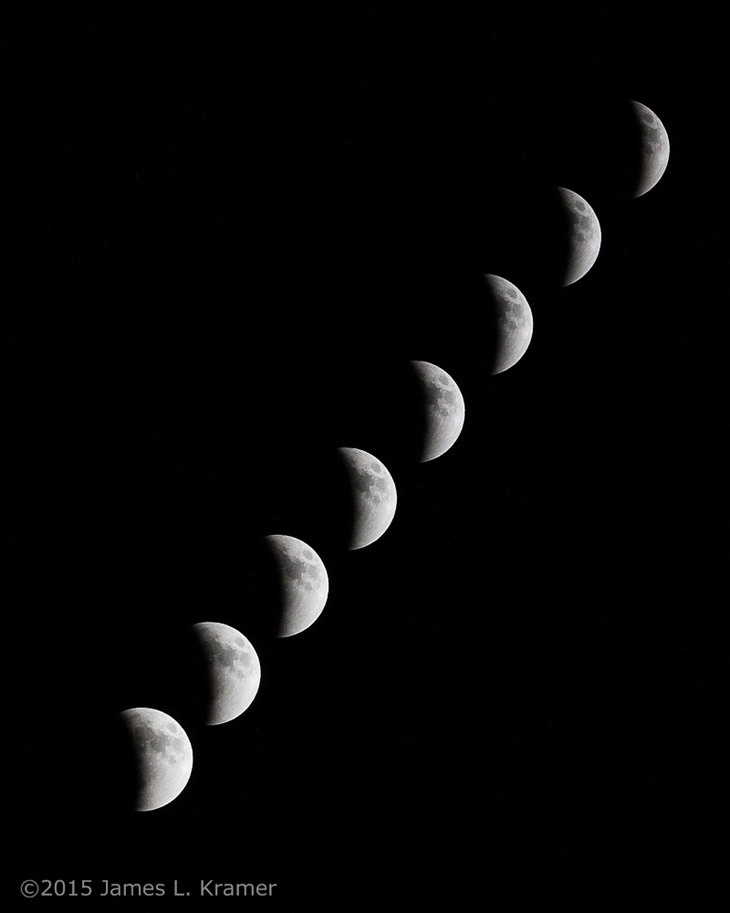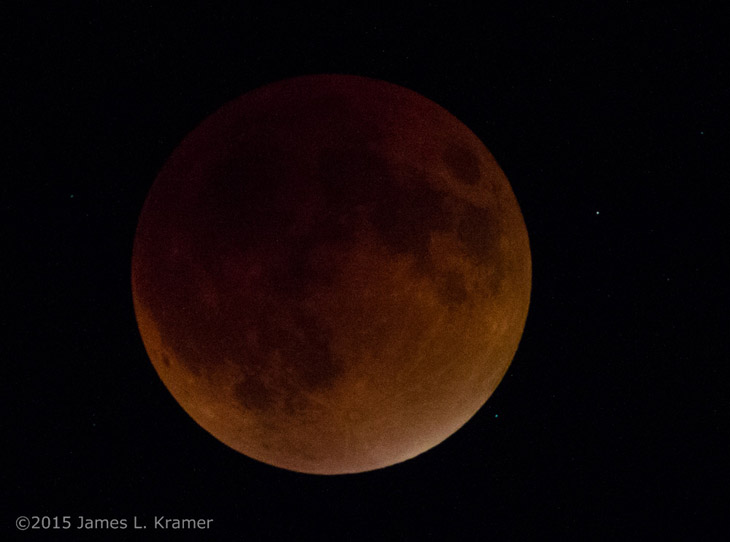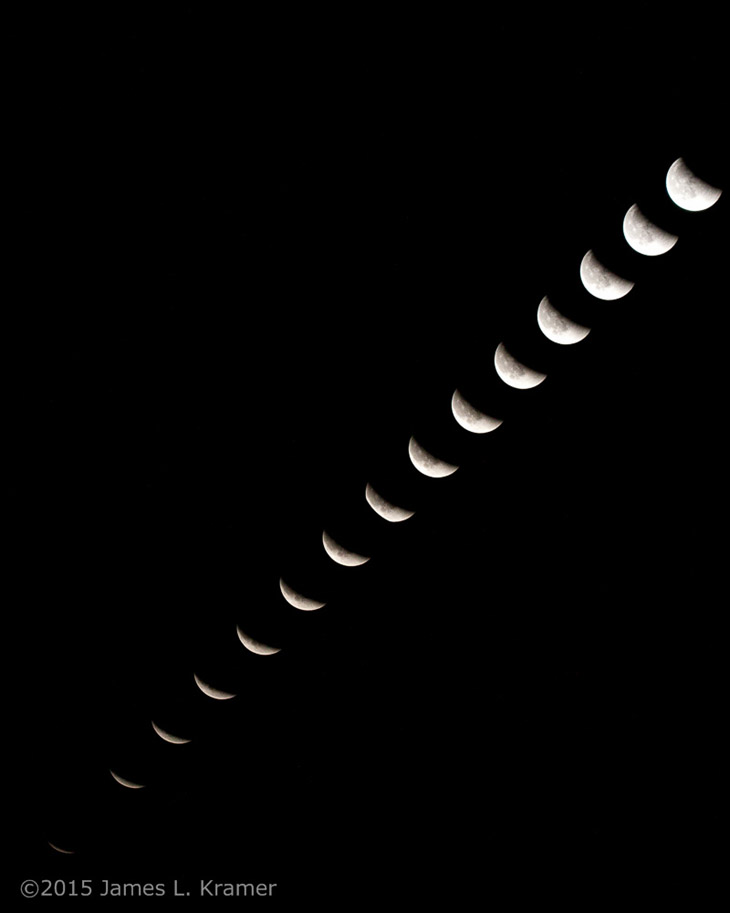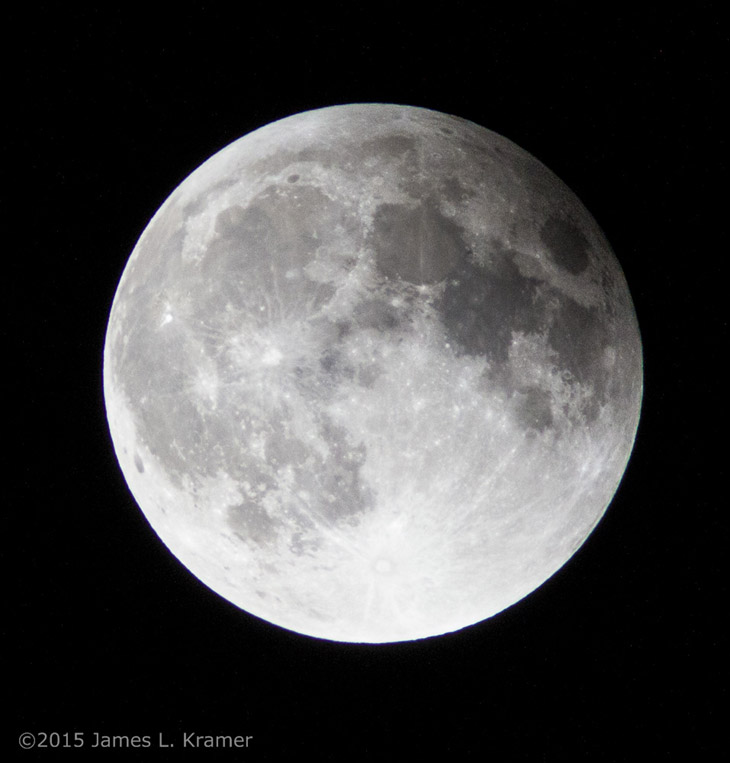
I mentioned how well I fared with the lunar eclipse a few posts ago, but as it turned out Jim Kramer (of the Alaskan posts) did a hell of a lot better that evening. Not so well later on, however, as his photo harddrive threw a shoe right after he’d downloaded all of the images and deleted them from his memory card – before, of course, he’d had a chance to back them up. Jim is even more conscientious about backups than I, and I’m pretty anal (and here you thought “Al” was short for something else,) but there are still vulnerable times in any procedure, and Jim got caught. I had a similar situation about ten years ago, right after dumping a bunch of photos to a transfer drive and reformatting the old drive, thus prompting the transfer drive to fail – I had checked the backups, too, before eradicating the originals. My guess is that the sudden weight gain on the drive causes stress, so I would recommend building the drive up first, perhaps by adding a lot [of/more] porn, before loading in the valuable images.
Anyway, Jim took some time rebuilding his system with a RAID array, which is too complicated to explain and besides I don’t know what it is anyway. Then he rescued the photos from the memory card and eventually got them to me yesterday, and if I’d been more on the ball I’d have had this post up then, but so it goes.
At top, a sequence of photos at the end of the eclipse, more or less – this is the moon exiting the umbral shadow, but there is a penumbral shadow that still covers it all, it’s just so thin that the slight dimming of the moon isn’t noticeable to casual viewing – however, a hint of it can be seen by looking at the maria in the far right of the sequence. I believe this is an ‘actual’ progression composite, meaning a true representation of the moon’s motion as it arced across the sky – Jim didn’t tell me (loquacious he’s not,) but the timing strikes me as right. The moon moves roughly its own width in 180 seconds, so this sequence spans about a half-hour.

This is a sequence as the eclipse was progressing towards totality, very nicely composed, and exposure was right where it needed to be. Due to orbital mechanics, the moon is moving left-to-right in these images, as it always is in the northern hemisphere, but the shadow of the Earth is overtaking it. Seems odd, but the primary motion of the moon in the sky is due to the Earth’s rotation, and unless you look close it seems to occupy the same position as the stars and move with them. However, it is orbiting on its own, as well as being linked to the Earth’s orbit of the sun, so these two things combined are responsible for the advancement of the shadow across its face. From time to time, you can witness the moon eclipsing a star or a planet, and the moon’s own motion becomes more apparent then. Universe Today is probably the best for letting you know when such a thing is going to occur next.

And we arrive at totality, please be sure you have all your belongings. Chances are everyone has already heard why this color is the way it is, but just in case…
The red comes from the sunlight shining, and bending, through the Earth’s atmosphere, the same thing that gives us red sunsets. With a solar eclipse, the moon and the sun are so close in apparent size from our vantage here on Earth that the moon blocks out the sun perfectly, but very briefly (since orbits are elliptical, at times the moon is too far away to completely cover the sun and an annular eclipse occurs instead.) The Earth is much bigger than the moon, however, so the shadow is even bigger, and a lunar eclipse lasts much longer. If it weren’t for the light being bent by Earth’s atmosphere, the moon would be quite dark in this shot. You have noticed that it is actually lopsided, with the darkest portion occurring near Mare Imbrium – this is because the moon almost never passes directly through the shadow, but somewhat off to the side; a little further and all we’d have is a partial eclipse.
For comparison, a lunar eclipse easily darkens the whole moon’s surface. A solar eclipse throws a deep shadow onto only a small portion of the Earth (cool photo – go to that link!)
And yes, those are stars visible in the shot. This image was shot at 1/2 second exposure at f8, ISO 3200, way longer than the exposure needed for a normal unobscured full moon, which would be about 1/4000 second or less for the same settings. Stars usually won’t show up in such a short exposure, and if it was lengthened to capture them, the moon would be ridiculously overexposed. Not to mention that atmospheric humidity would usually throw enough scatter glare close to the moon that they’d be lost anyway.

As the eclipse starts to exit, we get an idea of the relative amounts of light. The bright portion of the moon at lower left is no brighter than a normal full moon, in fact considerably dimmer, but it’s badly overexposed here to be able to see the red portion in nice detail (same settings as the previous image.) And take note of that color range near the terminator, because it’ll come up again on Monday.
Another sequence for comparison.

Jim was using two different cameras during the eclipse, and this one was doing wider sequence shots. By doing some simple Photoshop tricks, I can guess that the partial eclipse shot immediately above was taken at roughly the same time as the fourth moon from the bottom in this sequence, so you can compare the results. Again, he didn’t give me details (but might be shamed into confirming them,) so I’m using EXIF info for some of them, which may or may not be accurate for the sequences – we’ll just assume that it is. So each of these exposures was 1/200 second at f11, ISO 800, which means 10 stops difference in exposure, or, 1,024 times more light gathered in the red pics than those immediately above. Little wonder that the red portion of the moon vanished in the sequential shot.
And a last one as the eclipse went bye-bye. This was shot 41 minutes before mine.

The penumbral shadow is still making its appearance at upper right, while Jim is showing off how much better a lens he has than I do (Jim has been able to afford that kind of jazz.) I have to admit, the detail is pretty slick. So, thanks for the efforts, Jim – nice collection of eclipse pics, which you seem to be having far better luck than I have, for the past several years of eclipses (example one, example two and two-point-five, example three.)
While we are still on the subject of astronomy, the Draconids meteor shower is supposed to be visible tonight and tomorrow night, and these have finally coincided with a largely dark moon to improve viewing conditions. We’ll see what might happen here – I’m far from a decent night sky situation – and if perhaps Jim gets a chance to do a little out in dark-sky Kansas, though it messes badly with his work schedule, I know.




















































